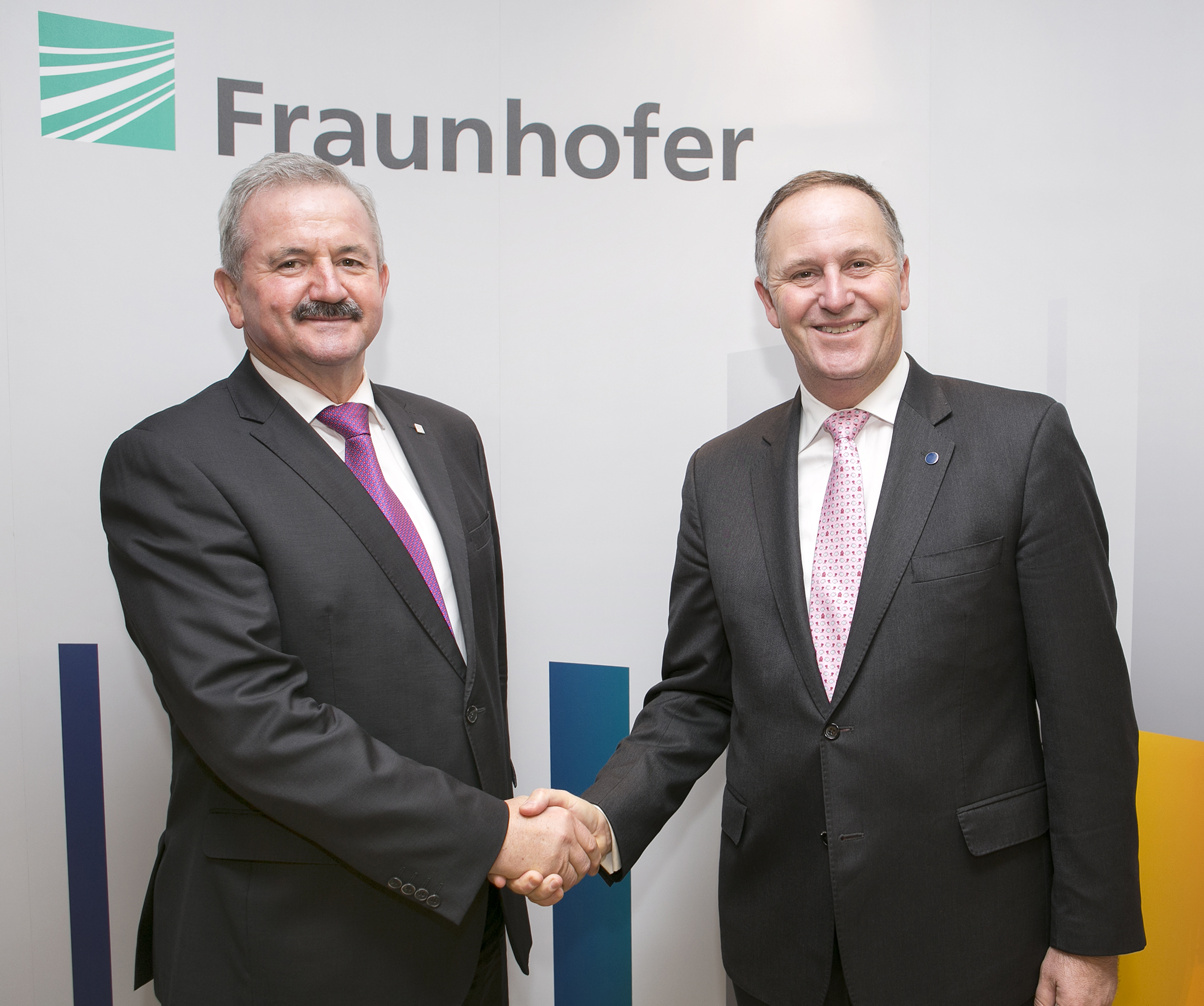Fraunhofer and the University of Auckland to co-develop a bionic elbow joint
The Fraunhofer-Gesellschaft and the University of Auckland in New Zealand will work hand in hand for the next three years on a project to develop a novel arm orthosis for elbows – the “Bionic Joint”. The kick-off meeting for the international project was held on December 1 at the Fraunhofer-Forum Berlin. It was attended by New Zealand Prime Minister John Key, Professor Reimund Neugebauer, president of the Fraunhofer-Gesellschaft, and Dr Urs Schneider, project manager at the Fraunhofer Institute for Manufacturing Engineering and Automation IPA in Stuttgart, who together presented the research collaboration.

The exoskeleton that the researchers aim to develop in the course of this project will be able to analyze and support movements of the elbow. To do so, this arm orthosis must be compact, lightweight and intuitive to use – as well as being easily adaptable to the natural movements of the human arm. There is a large demand for this type of exoskel-eton because, as a result of demographic change, there are more and more people suffering from worn joints in their arms and hands.
A top-class partner with the power to innovate
"Our strategic alliances with partners in other countries are based on the scientific benefits they bring to Fraunhofer and the positive impulses they generate for research both in Germany and their own country,” says Professor Reimund Neugebauer, presi-dent of the Fraunhofer-Gesellschaft. “International collaborative research produces the best results when both partners aspire to excellence in their respective fields and have a strong record of innovation."
This is the case for the Bionic Joint project. While the Fraunhofer researchers possess wide expertise in the fields of biomechatronics, robotics and signal processing, their New Zealand colleagues are experts in sensor systems and computer-assisted physiol-ogy. “We are delighted and honored to be chosen as equally qualified partners in this collaborative project with the Fraunhofer-Gesellschaft,” says Professor Peter Hunter of the Auckland Bioengineering Institute, the project manager responsible for coordinat-ing this project on the part of the University of Auckland.
“What’s important is to understand the necessary physical exertion and help the muscles to support it. By developing this novel exoskeleton, we want to enable patients to carry out everyday tasks,” explains Dr Urs Schneider, head of Fraunhofer IPA’s Biomechatronic Systems department. He is backed up by Hunter, who says, “None of the arm orthosis solutions proposed to date has been transformed into a marketable product. If we succeed, it would be a milestone in bionic engineering.”
International ICON program
The Bionic Joint project forms part of the Fraunhofer-Gesellschaft’s ICON program to promote international cooperation and networking with centers of excellence in other countries. The funds granted to support this program through to 2019 amount to 1.9 million euros. Each partner is responsible for financing the half of this project.